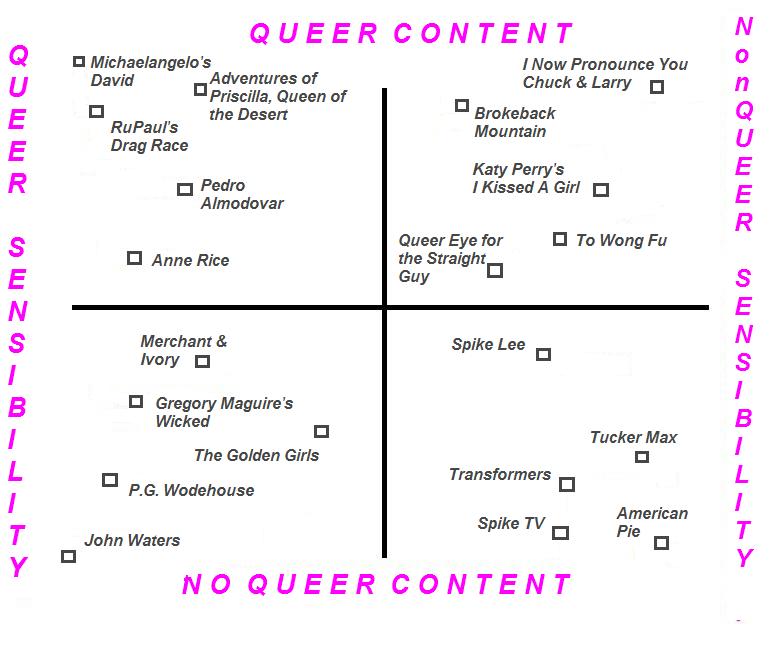I recently had a discussion with another writer about the concept of a queer sensibility.
Our conversation brought up profound questions that have been heavily considered and debated elsewhere–quite smartly in this article I found by poet/filmmaker Charles Jensen.
What is a queer sensibility?
Can a work of fiction, art, or film be queer, if it doesn’t portray queer sexuality?
Is there a non-queer or heteronormative sensibility?
Can a work of fiction, etc. that portrays queer sexuality be considered non-queer?
I believe a queer sensibility exists, and it goes beyond a homoerotic aesthetic or an explicit portrayal of same-sex love. For me, it’s the kind of thing I know when I see it.
I respect that many queer and non-queer folks disagree with me. There’s an argument to be made against labeling creative work queer, or non-queer; and it’s not my purpose to elevate one over the other. Sensibility is by definition personal and subjective. But here’s what this got me thinking about just for fun.
What creative works have little to no queer content, but I still consider queer?
What creative works portay queerness, but still feel essentially heteronormative?
These ponderings led to—I present—the QUEER MATRIX.
Certain to piss off lots of people, the Queer Matrix is a way of understanding popular media from, well, a lens of queerness. It’s a take on New York Magazine’s Approval Matrix, which is the first thing I check out whenever I have a copy. But it’s a rather piteous derivative, artistically. I made it in the only graphics program I know: Paint.

